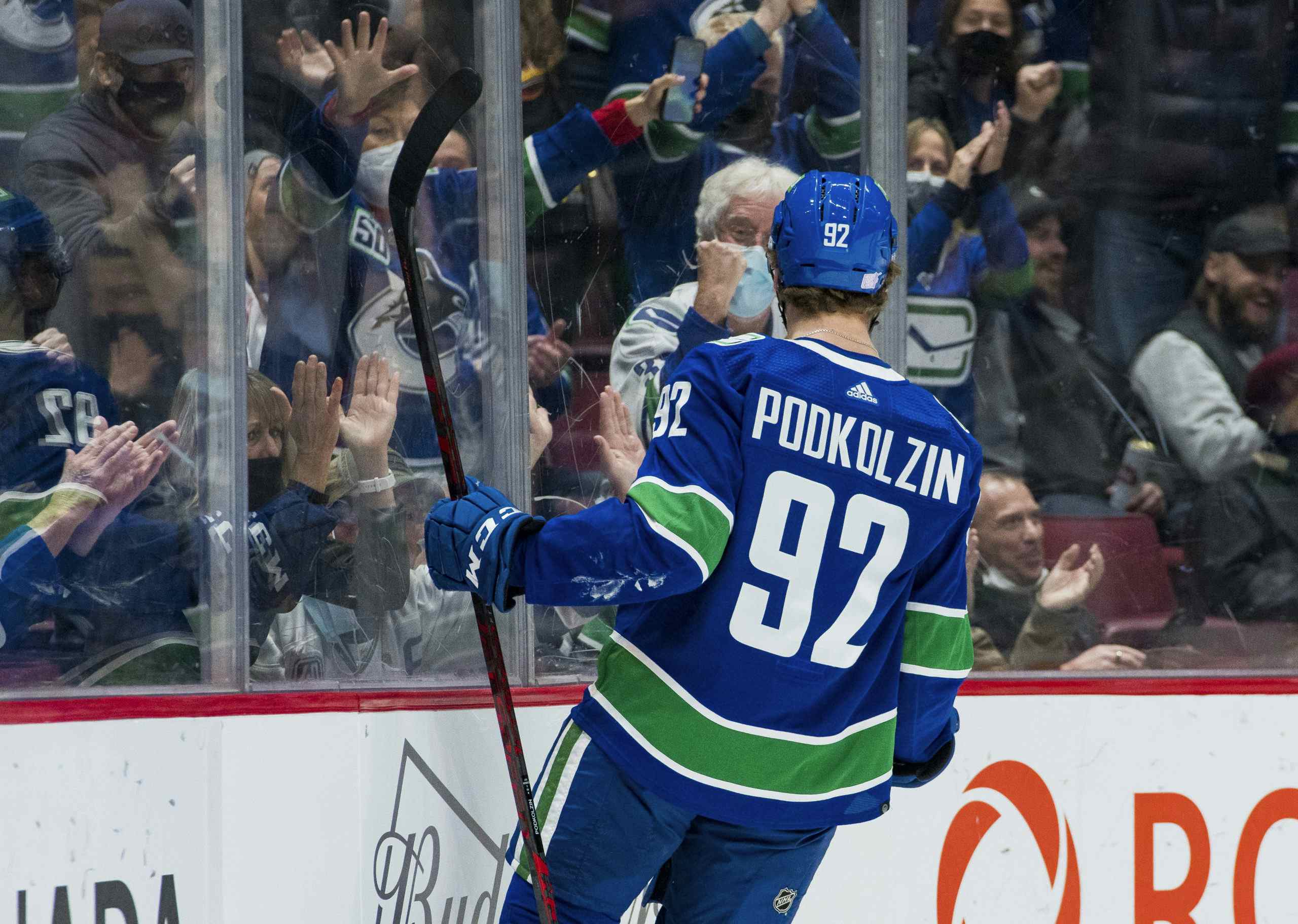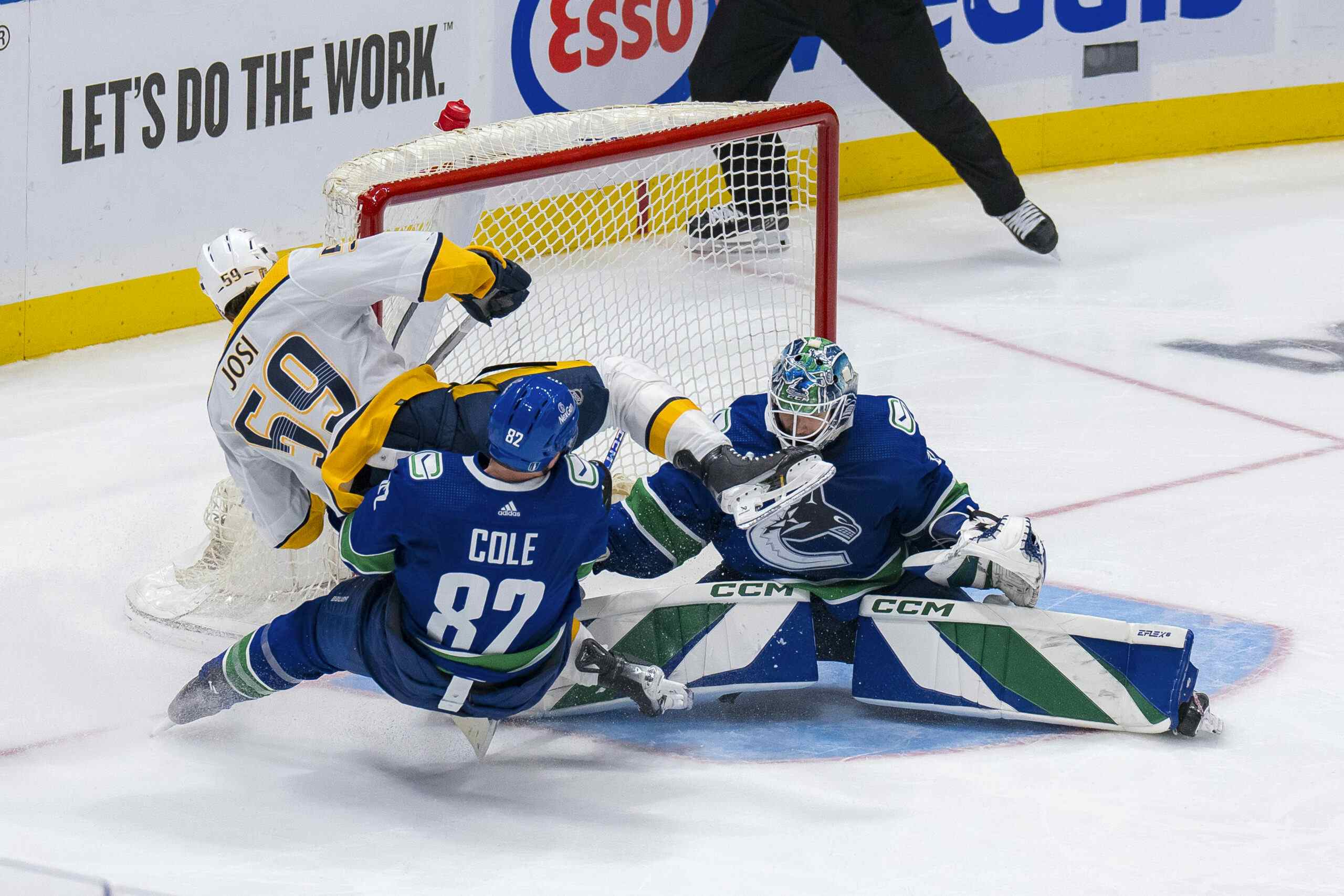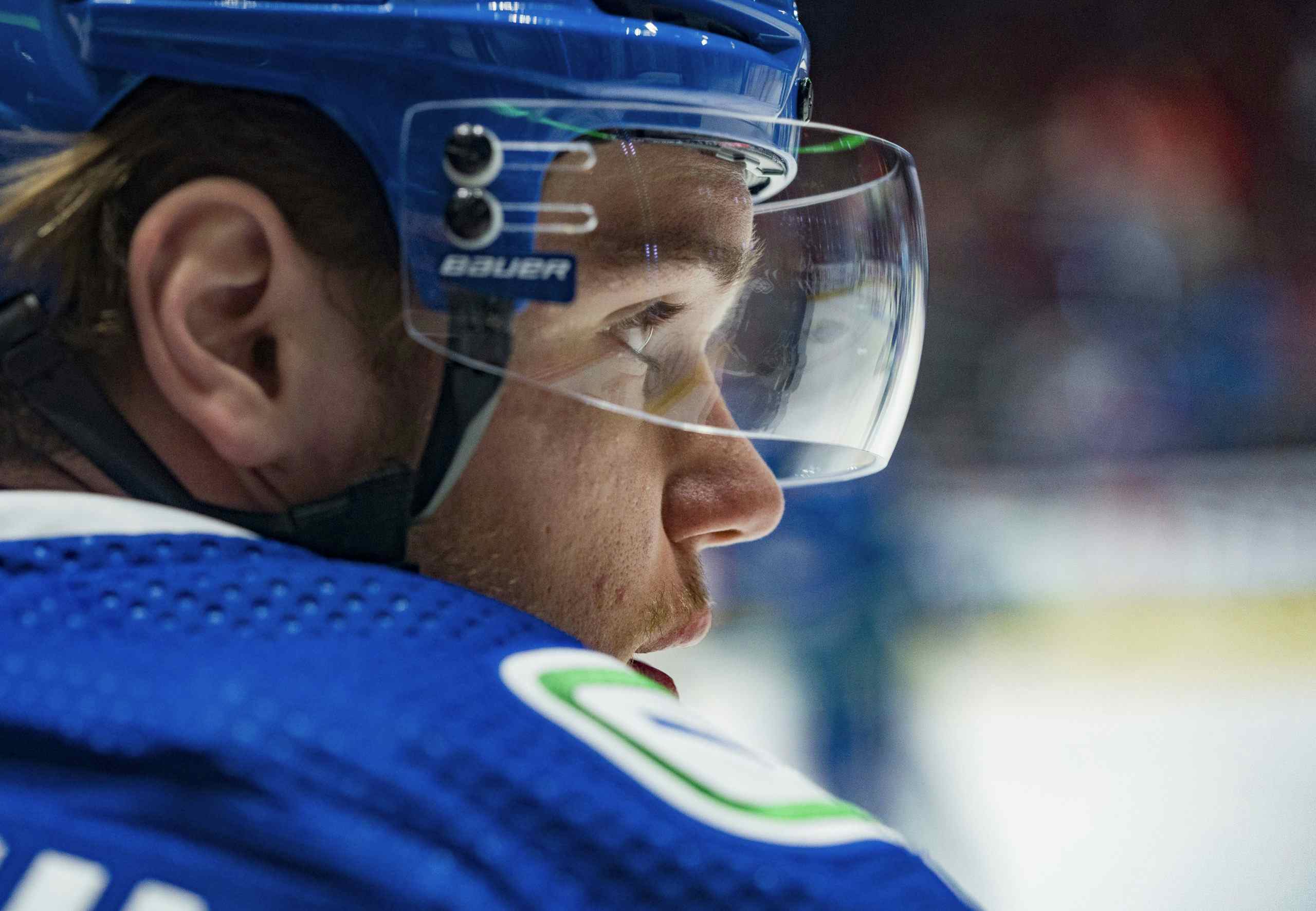Using pGPS: Mike Gillis UFA Prospects
7 years ago
Hockey season is on the horizon, so news is really starting to pick up the pace. At the moment, we are counting down the top 20 prospects within the Canucks organization, some of which the current regime acquired.
At the moment, Jim Benning’s left no stone unturned as he continues to look for ways to add to the current prospect pool. The Canucks are rumoured to be in the hunt for NCAA UFA Matt Benning. Yes, he is related, it’s Jim’s nephew — and he plays with Adam Gaudette, too.
Given that rumoured interest, we used pGPS to look at M. Benning, and an underwhelming 3.1% went onto becoming NHL regulars. I tweeted this out, merely as a ‘for your information’, but someone asked a question that got the wheels turning:

It was a good question by Vurt da Furk (obviously his legal name) — using pGPS, how did Tanev look when the Canucks signed him at the conclusion of the 2009-10 season?
Why stop there?
How did all of Mike Gillis’s prospect free agent signings look?
Before we dive in – let’s make it clear, this isn’t a comparison between the previous regime and the current one. This is simply an exercise of looking back to see how those signings would’ve looked using the tools we have available to us now.
Chris Tanev
Without a doubt, the best NCAA UFA that the Canucks have ever signed. Coming from R.I.T., few among us knew anything about Tanev, but the season that followed (2010-11) his signing, there he was playing 29 regular season and five playoff games. Obviously, his appearance in the lineup was in large part due to injuries. But he has now developed into a top pairing defenceman for the Canucks, who is an elite shot suppressor and defensive specialist. Tanev also has a knack for just getting the puck out of trouble through his movement or puck distribution. Where would the Canucks be without him right now?
Using pGPS to look at his D+2 season, a very impressive 21.05% went onto being an NHL regular. At the time, it was like the Canucks were adding a late second round pick, but a player who was much closer to actually making the NHL. Given that the Canucks were knocking on the door of being a contender, even looking at the moment they signed him, it was an impressive addition.
Tanev’s peculiar development curve appears likely to have been an issue of physical development than anything else. Unfortunately, pGPS can’t get a read on Tanev’s OJHL and OPJHL season, as there just isn’t a worthwhile sample of successful players from those leagues. A fact which reinforces Tanev’s rare career arch.
Kellan Tochkin
Signed as a free agent after the 2009 Canucks development camp, Tochkin never really amounted to much within the Canucks organization. Measuring in at 5’9″ and 170 lbs, Tochkin did well in the WHL, posting 0.95 PPG over the course of his junior career but struggled at the Young Stars camps and NHL/AHL training camps. As a result, the Canucks soured on him, forgoing an invite to training camp in 2013-14. Tochkin never played a game in AHL, starting the CHL (Central Hockey League) and the ECHL. The Canucks eventually traded Tochkin to the Carolina Hurricanes on September 29, 2013, with a fourth round pick for Jeremy Walsh and Zac Dalpe.
What sticks out for Tochkin is when using pGPS, a very impressive 29.03% of comparable players went on to become NHL regulars. That is the highest of any of the prospects that the Gillis regime signed. But the important caveat here is that Tochkin was just concluding his first season of draft eligibility, and there were only 31 matches.
Tochkin is a classic case where the ‘old school’ eye and the numbers should converge. The numbers couldn’t accurately reflect Tochkin’s struggles again larger competition.
That said, no harm done here. All it cost the Canucks was a contract spot, and even then they eventually traded him for depth pieces.
Dane Fox
Dane Fox is a prospect that at one point generated a healthy amount of excitement in the market. Things changed quickly, though.
Fox exploded offensively in his D+2 season playing with some guy named Connor McDavid, posting 107 points in 67 games during the 2013-14 season. Those eye-popping numbers attracted the Canucks, among other teams, to sign the young forward from Chatham, Ontario.
Aside from the obvious boost from playing with one of the best players of the last decade, it was clear that Fox had some issues getting around the ice, and that became more apparent when he faced professional competition. Fox saw one game with Comets during the 2014-15 season but spent the majority of that campaign in Kalamazoo of the ECHL. He did reasonably well, putting up 30 goals in 70 games. Arguably, Fox played well enough to earn another chance with Utica for the 2015-16 season, but never suited up for the Comets and ended up back in the ECHL. He put up a respectable 50 points in 53 games with the Wings before getting traded to the Hurricanes for ‘Future Considerations’. He played one game for the Charlotte Checkers (AHL), got injured and never suited up again.
Given his shot rate of 3.3 shots/PG and decent production in the ECHL, Fox likely deserved at least one more chance to stick with the Comets.
Using pGPS to look at his D+2 season (when the Canucks signed him) – a respectable 14.8% went onto becoming NHL regulars. Pretty good odds for an undrafted CHL forward. Like Tochkin, there were some red flags, but again no ‘cost’ of a draft pick to add Fox.
The Sweatt Brothers
The Chicago Blackhawks drafted Bill Sweatt in 2007, before eventually dealing him to the Toronto Maple Leafs on June 30, 2010. Opting to become a UFA, Bill signed with the Canucks on August 18th, 2010 joining his brother Lee, who had signed with the Canucks three months prior.
Bill had underwhelming production in the NCAA, but had speed to burn, so it was fair to think that he could project into a serviceable third liner who chipped in offensively. He did fairly well in the AHL, averaging around 0.50 PPG and got three games with the Canucks over two seasons. He was held pointless.
When his contract finished, the Canucks provided a qualifying offer to retain his rights, but B. Sweatt opted to sign in the SHL. Where he did reasonably well for the first two years, before hitting somewhat of a wall late last season. The Canucks still retain his rights until June 30, 2017.
Using pGPS – about 9.05% went onto becoming NHL regulars, which is on the low side of sought after NCAA free agents but is attributed to his 33 points in 38 games in his final season at Colorado College.
His brother, Lee, a diminutive defenceman had done the European circuit before signing with the Canucks. Measuring in at 5’9″, the odds were stacked against him, but he did appear in three games with the Canucks during the 2010-11 season scoring his first NHL goal:
Using pGPS – 0.0% of Lee’s matches went on to become NHL regulars. That’s due to his low point totals in the SM-Liiga and KHL during the 2009-10 season; he was 24 years olds, and there aren’t many 5’9″ defenceman in the NHL.
Before returning to the AHL, Sweatt blocked a shot in practice and suffered a broken foot and was out for the remainder of the year. The Canucks did not provide a qualifying offer, and he became a UFA. He signed with the Ottawa Senators but retired before the season began to become a financial advisor.
The Bad
| Position | Name | pGPS | Season |
| D | Evan OBerg | 8.96% | 2008/09 |
| RW | Eric Walsky | 3.82% | 2008/09 |
| RW/LW | Darren Archibald | 3.70% | 2010/11 |
“The Bad” likely isn’t a fair title for this group, as the one with the lowest pGPS appeared in the NHL for a handful of games and is still a part of the Canucks organization.
Evan Oberg seemed like a reasonable gamble as a depth defenceman – he has bounced around the NHL and AHL from 2009-10 to 2014-15. Appearing in 7 NHL games during that time while seeing time with the Canucks, Tampa Bay Lightning, and Florida Panthers organizations. He spent the 2015-16 season in the DEL
Eric Walsky was the first UFA prospect signing for the Canucks, and he didn’t leave much of an impression, posting 11 points in 37 AHL games before finding his way to the ECHL. That was his only season in the organization, as he headed to the NLA (Swiss) for the 2010-11 season and remains there.
Darren Archibald was signed mid-season during the 2010-11 season and remains in the organization, albeit on an AHL contract. He saw 16 games of NHL action during the Tortorella year, including the Heritage Classic. Archibald is a fan favourite in Utica.
Mike Zalewski was excluded as he will be profiled next week in the ‘Honourable Mentions’ of our prospect series.
What’s clear with the players above – pGPS doesn’t paint the full picture, which we already knew, and the majority of prospects won’t make it.
Furthermore, with UFA prospects, there is a little more risk because generally there is a reason why those players were not drafted – such as Dane Fox’s skating issues or Kellan Tochkin’s size. But there are players that can slip through the cracks because they are behind the normal development curve.
Mike Gillis and the rest of his management team did a decent job trying to add prospects through the UFA market. They hit a home run getting Tanev, did reasonably well with goaltender Eddie Lack and then got a decent return on Zalewski and Archibald, both are still a serviceable players in the AHL.
At the very least, it’s interesting to look back to see how their players looked at the time of their signing.





